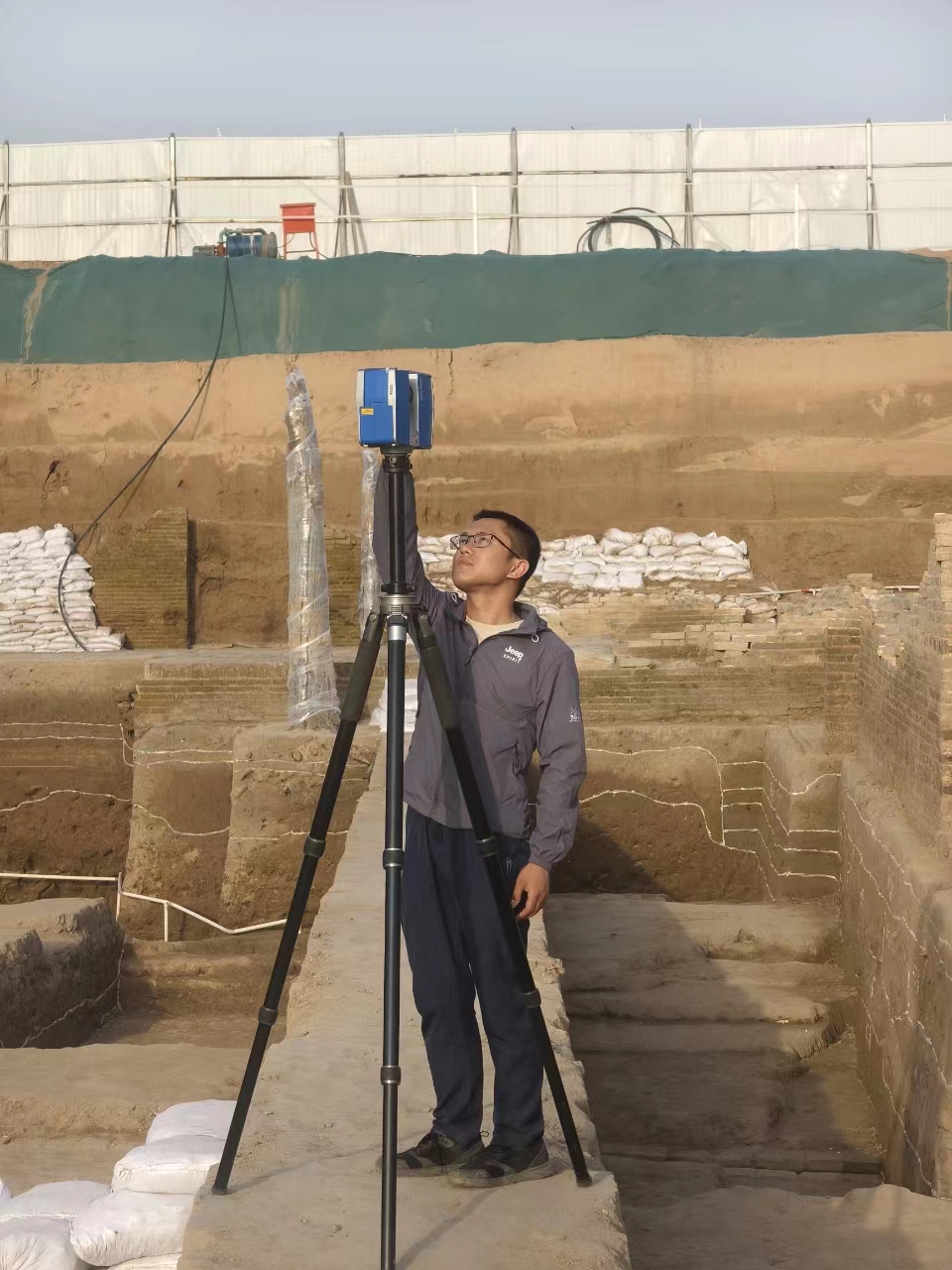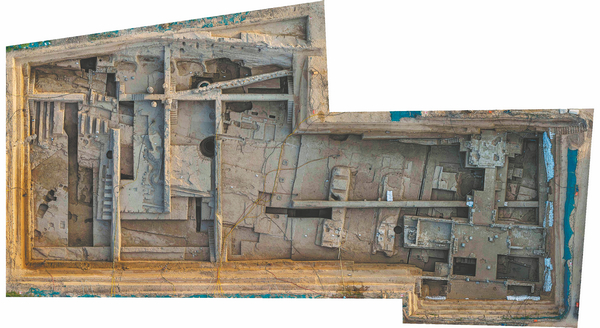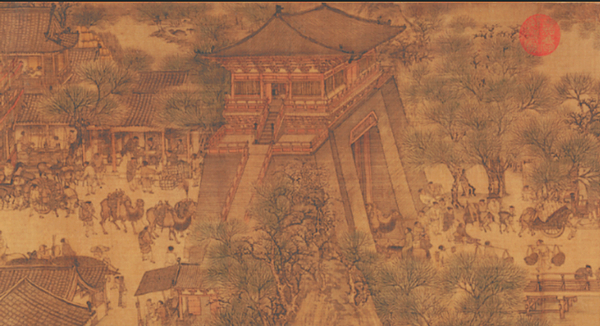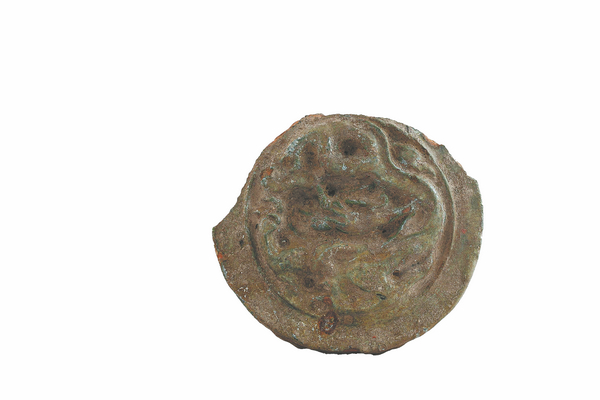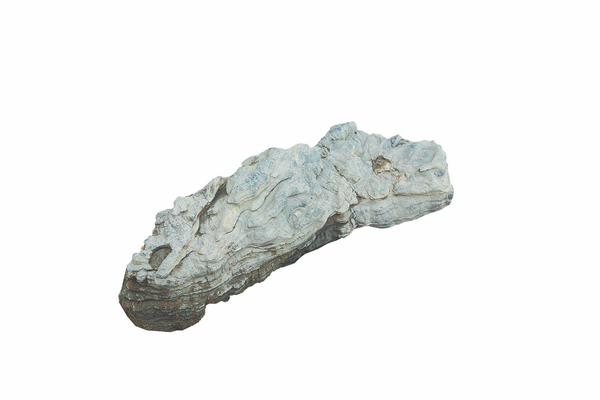An aerial view of Jinglong Gate ruins in Kaifeng, Henan province. [Photo provided to China Daily]
Recently unearthed ruins of a buried Northern Song city reveal a fascinating saga, Wang Kaihao reports.
Probably one of the most famous Chinese landscape paintings, Along the River During the Qingming Festival is synonymous with the prosperous past of Kaifeng.
As portrayed in the milestone Northern Song (960-1127) scroll by Zhang Zeduan, who served at the imperial court, this city in present-day Henan province was then at its zenith.
A booming economy, vibrant culture, and ultimate political status, thanks to its role as the national capital, characterized this metropolis of more than 1 million. However, wars, the sands of time, and frequent inundation by the Yellow River, condemned that flourishing era to history.
Archaeologists have been working to uncover the long-buried stories of Kaifeng, which was also known as Dongjing ("the eastern capital") during the Northern Song period, and the recent study of the surroundings of the ruins of a city gate yielded crucial clues.
As attested to in many historical documents, Jinglong Gate, which translates as "the gate to worship the dragon", was originally set in Kaifeng's inner city wall.
According to the Dongjing Meng Hua Lu (Eastern Capital: A Dream of Splendor), a nostalgic memoir written by Meng Yuanlao around the time when the Northern Song period ended, the square-shaped inner city had a perimeter of about 10 kilometers, and Jinglong Gate was the middle of three gates set in the inner north wall.
Beginning last year, researchers from the Henan Provincial Institute of Cultural Heritage and Archaeology and the Kaifeng Institute of Cultural Relics and Archaeology focused on excavating the ruins, unearthing the city gate, whose front facade spans 60 meters, in the process.
This figure is equal to the dimensions of the Meridian Gate, or the southern entry to Beijing's Forbidden City, which visitors can see today.
"Jinglong Gate is the largest and highest-level city gate from the Northern Song period we've excavated so far," Wang Sanying, deputy director of the Kaifeng institute and leader of the project, told a National Cultural Heritage Administration news conference held to publicize the new findings in Beijing on Friday.
A section of Along the River During the Qingming Festival that shows a city wall of Kaifeng.[Photo provided to China Daily]
A glimpse of splendor
With a depth of 19.3 meters and a width of 5.6 meters, the structure of Jinglong Gate consists of crossed pillars and beams, with earthen foundations on either side.
The walls between the entrance and exit of the gateway are about 4.7 meters wide and are made of rammed earth. Masonry platforms on both sides are about 16.7 meters wide.
"This demonstrates its exceptional ceremonial significance," Wang says. "It fills in many gaps in our study of city gates of that period."
He explains that construction of the city gate echoes records in the Yingzao Fashi (Treatise on Architectural Methods, or State Building Standards), a Northern Song manual on architecture and craftsmanship.
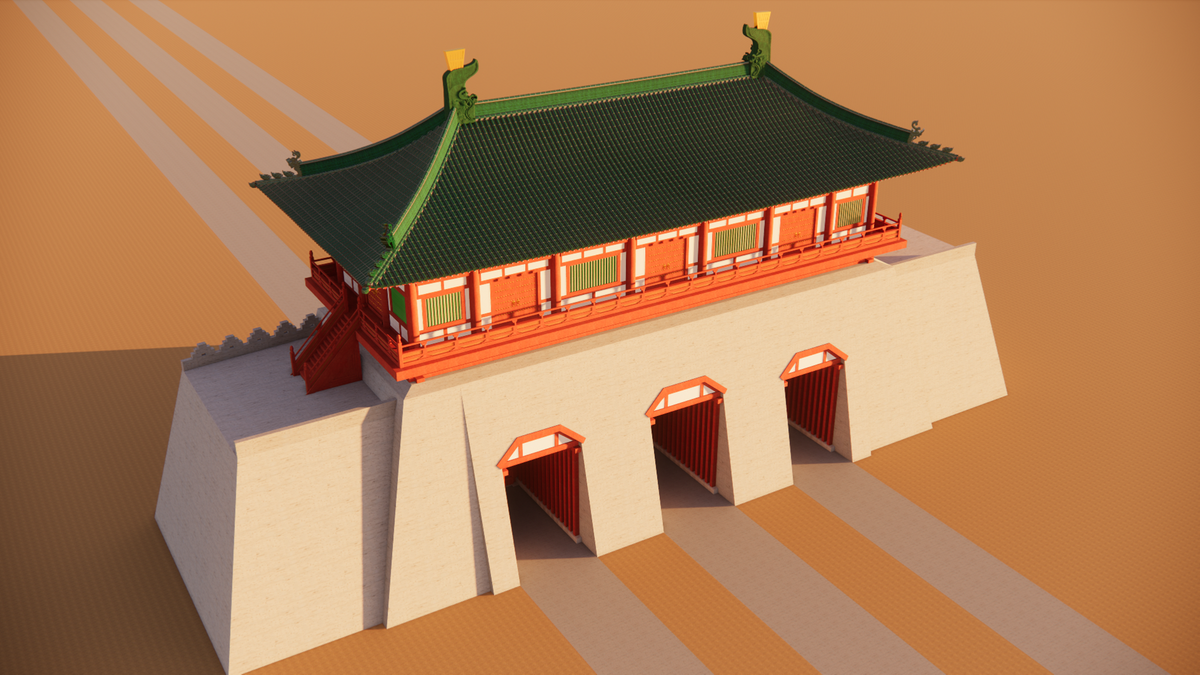
A glazed constructional component,unearthed from the site helps portray the prosperity of Kaifeng in the past.[Photo provided to China Daily]
Zhao Ji (1082-1135), a Northern Song emperor, is regarded as an artistic genius for having left iconic paintings and pieces of calligraphy for later generations to admire. In Auspicious Cranes, he depicts the birds, which represent longevity in traditional Chinese culture, hovering above his imperial city.
Reality was not as kind. In 1127, Kaifeng fell to the Jurchen people, who ruled the Jin Dynasty (1115-1234) to the north. He was taken prisoner, and his city was severely damaged in the conflict.
"Based on these findings, and thanks to evidence in Along the River During the Qingming Festival, Auspicious Cranes, and other key paintings of that time, we can picture what Dongjing's city gates really looked like," Wang adds.
In addition, archaeologists also unearthed a section of the northern wall of the inner city about 3.3 meters in height. To their surprise, they discovered that it was built on a base that dates back to the even earlier Tang Dynasty (618-907) period.
Although a city known as Bianzhou was known to exist before Dongjing rose to become a metropolis, little physical evidence of it has been found.
"Using the extraordinary finding of Jinglong Gate as coordinates, we can explore more areas of Dongjing," Wang says.
Ruins of roads, the walls of a nearby palace, towering terraces and other key structures from the Northern Song and Jin periods began to show up.
"We also discovered that the northern walls of the inner city during the Northern Song period and the imperial city of the Jin period did not overlap," Wang continues. "That gives us fresh ideas about the reconstruction of Kaifeng (after the war of 1127)."
A porcelain bowl,unearthed from the site helps portray the prosperity of Kaifeng in the past. [Photo provided to China Daily]
A layered history
Except for a few standing pagodas, modern visitors to Kaifeng can barely see traces of other Northern Song architecture above ground.
Archaeologists began their search in the 1980s, and some key discoveries were made. They unearthed Shuntian Gate, a gate smaller than Jinglong, in the western section of the outer city, and found the remains of Zhouqiao bridge, once a downtown artery.
It was no easy task as the ruins of the Northern Song city lie buried 8 to 11 meters beneath current ground level. In addition to deposits of Yellow River mud, the remains of cities from the Jin, Yuan (1271-1368), Ming (1368-1644), and Qing (1644-1911) dynasties are layered on top, and all overlap almost entirely with the urban area of Kaifeng today.
During recent excavations around Jinglong Gate, Wang's team also found a section of the wall of a Ming prince's residence, as well as traces of a courtyard, temple, well, and farmland.
"Finding a suitable place to begin excavations is like threading a needle; you only find scattered pieces," says Dong Xinlin, a researcher at the Institute of Archaeology with the Chinese Academy of Social Sciences, who focuses on the study of ancient cities. "However, as we put these jigsaw pieces together, we may gradually develop a bigger picture, or even get a sense of the urban layout."
He adds that the Kaifeng of the Northern Song era is critical to understanding how cities evolved from the Tang-era layout of individual enclosed neighborhoods, called lifang, to a more flexible urban design. "The landmark discovery of Jinglong Gate indicates just how well aspects of Kaifeng from that period were preserved underground," Dong explains. "What we have found is awe-inspiring, but we have a long way to go."
Qin Dashu, an archaeology professor at Peking University, says that the findings in Kaifeng have also corrected some inaccuracies in the Dongjing Meng Hua Lu, like the distance between places, as well as the location and structure of gates.
"Compared to memory, archaeological evidence is perhaps more convincing," Qin says.
Part of a rockery unearthed from the site helps portray the prosperity of Kaifeng in the past. [Photo provided to China Daily]
He adds that some findings echo famous urban tales. For example, the discovery of garden rockeries may remind people of Zhao Ji's famous "hobby" of collecting exotic-looking and precious stones from around the country.
Jinglong Gate was unearthed as the result of a construction project. After its discovery, the original plan was altered to leave enough room for protection of the site.
Zhang Huiming, deputy director of the Henan Provincial Administration of Cultural Heritage, says that excavation pits were also temporarily refilled to protect the site from damage during the summer rainy season.
"They'll be opened again at the right moment, and we'll also explore the possibility setting up facilities for public exhibition of the site in the future," Zhang says.
In December, the National Cultural Heritage Administration approved a plan for a demonstration zone in Kaifeng to introduce archaeological findings to the public and bolster the local economy.
Lin Liugen, an archaeology professor at Zhejiang University, recalls his experience of recently visiting the archaeological site.
"I was stunned, and not just because of the grandeur of the city wall, or its academic significance," he says. "The site has told us more than stories of destruction; it's more about stories of rebirth. In archaeological sites in Kaifeng, we can see the vitality of Chinese civilization through a continuous lineage."
"We'd like people to know Kaifeng has another Along the River During the Qingming Festival that is buried underground," Lin says. "Its prosperity is being drawn by archaeologists."
